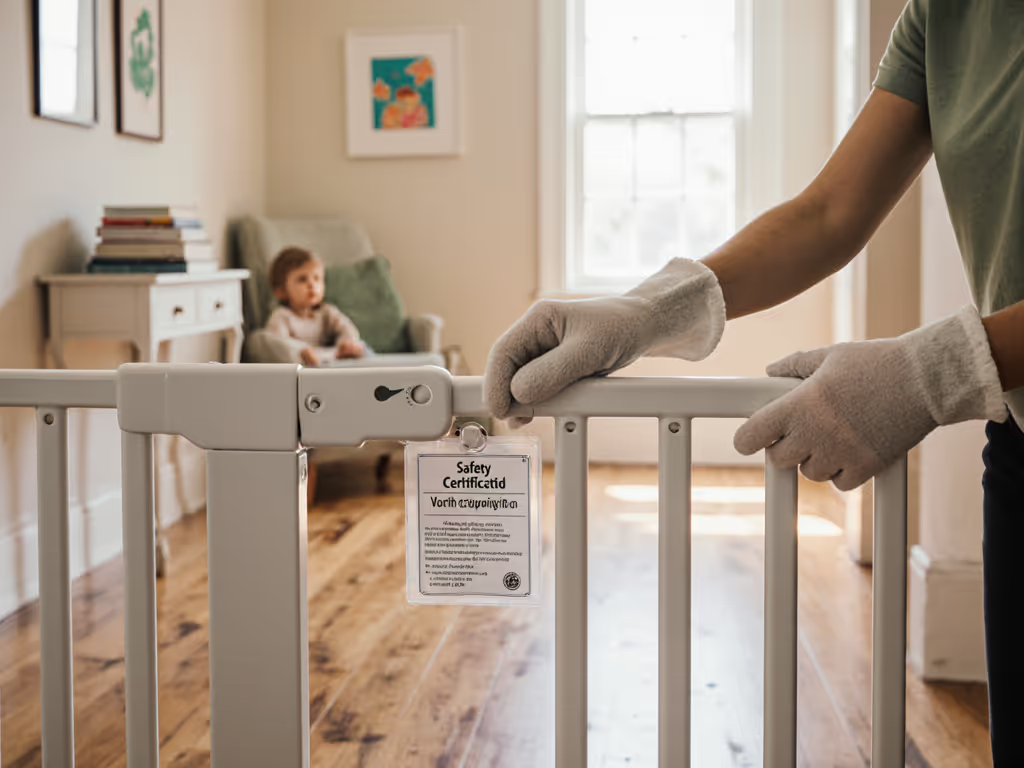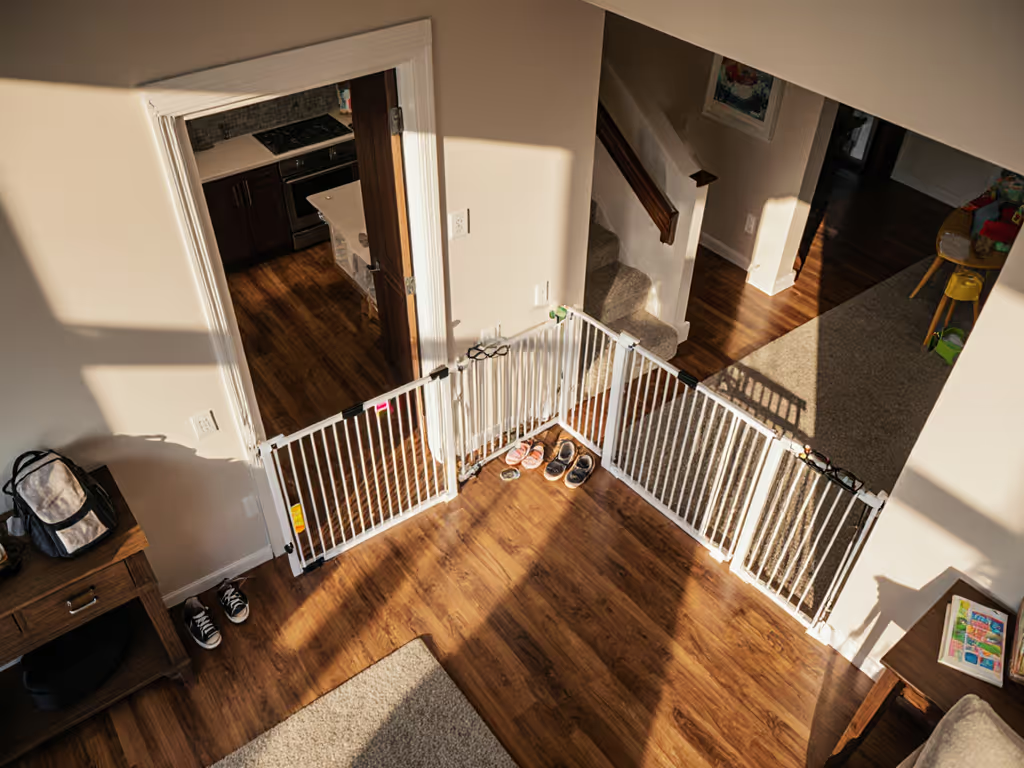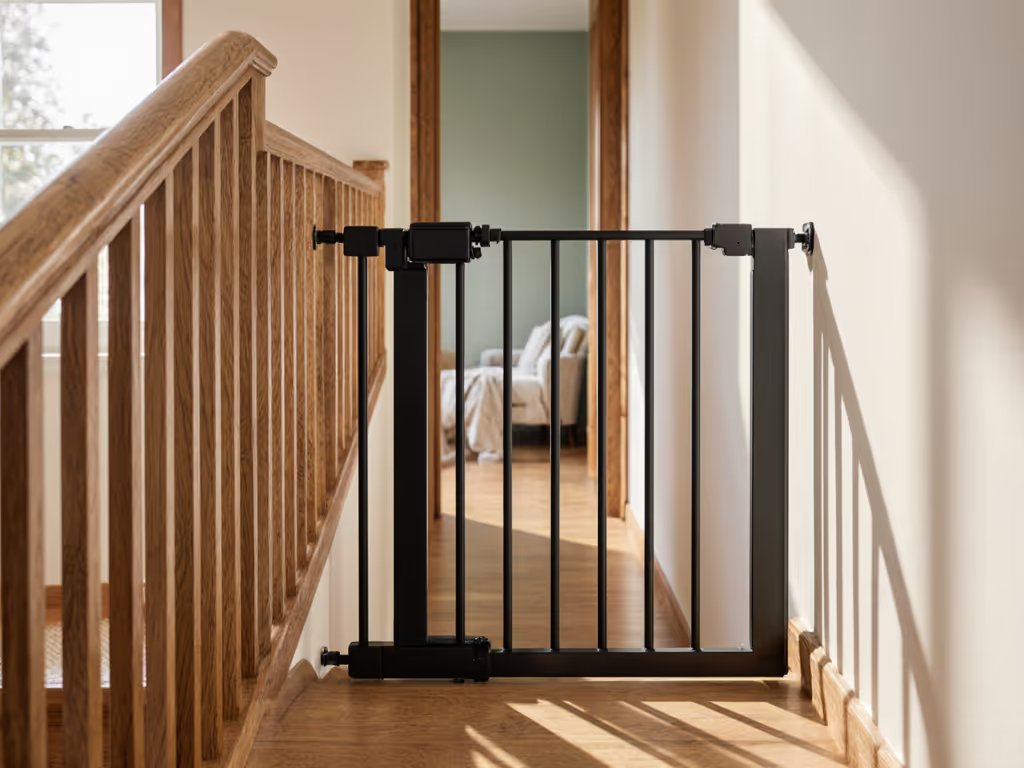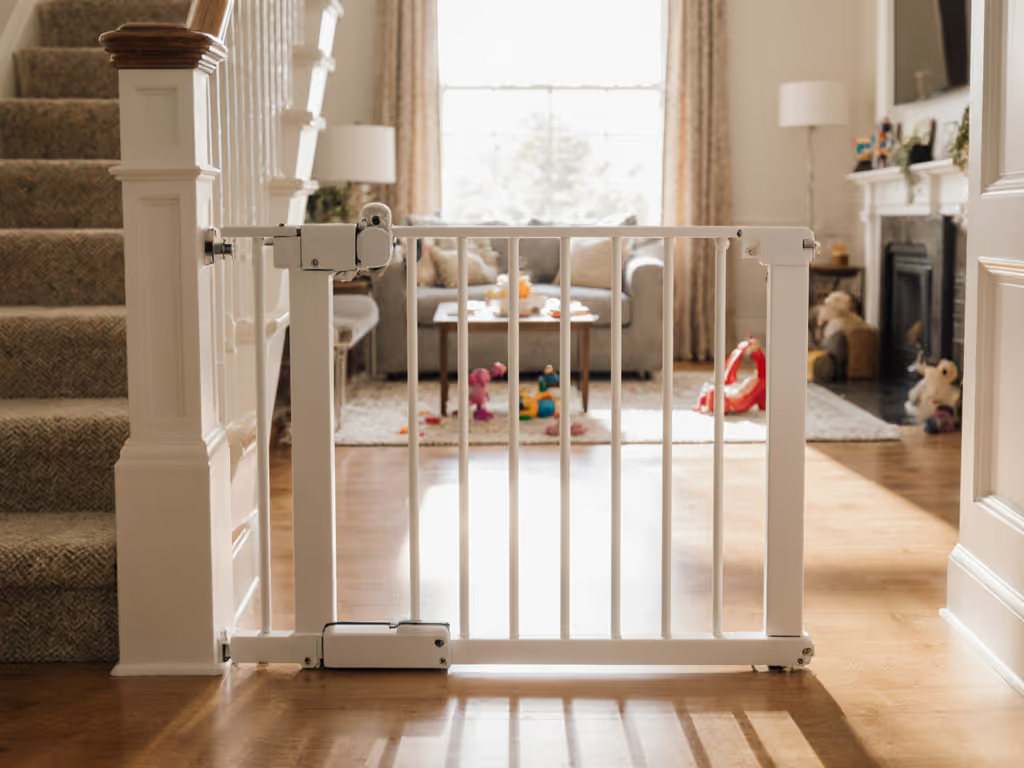
36-Inch Baby Gate Rules for Licensed Daycares
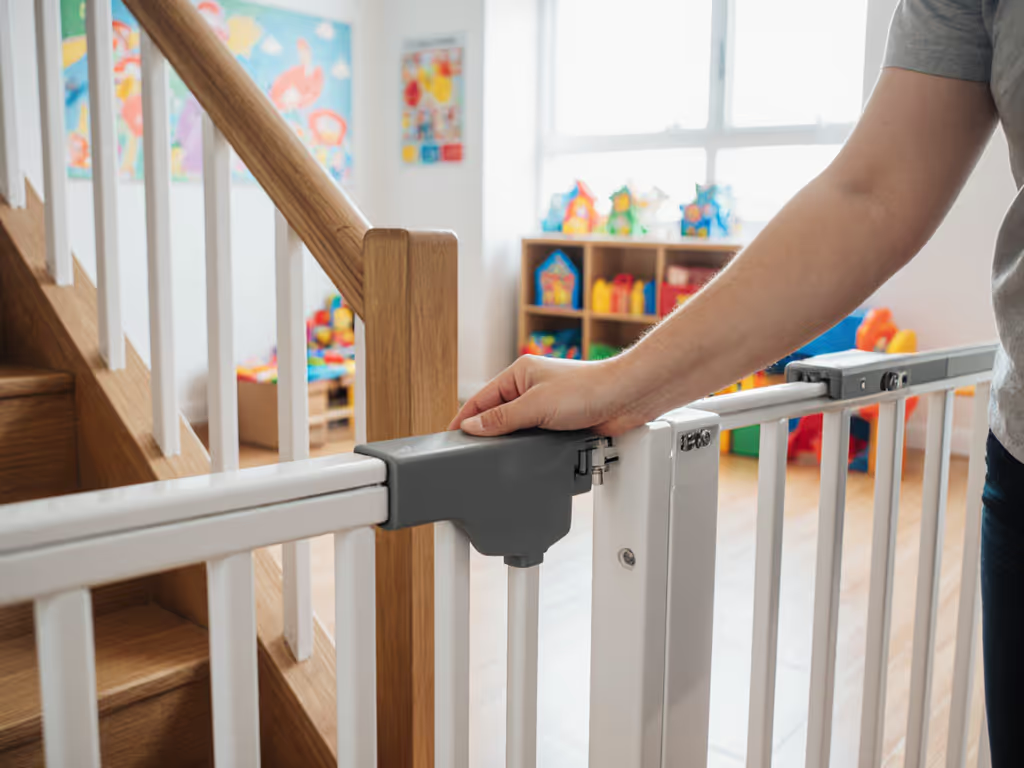
Understanding childcare gate safety standards and daycare baby gate requirements can feel overwhelming when you're juggling multiple caregivers, pets, and inspections. But what if safety didn't require constant vigilance, just thoughtful setup? Let's transform confusing regulations into caregiver-proof routines that work whether Grandma's visiting or you're managing pet traffic during snack time.
What height requirements apply to daycare baby gates?
Federal and state regulations require gates to be at least 22 inches tall, measured from floor to top rail. This JPMA-certified standard helps ensure toddlers can't easily climb over. For a deeper look at certification criteria, see our JPMA vs ASTM safety certification guide. But here's what most inspectors don't tell you: the real safety win comes from pairing height with correctly positioned latches. A gate that's technically compliant becomes hazardous if the latch requires two hands to operate when carrying a child.
Make safety the default, not the exception, every day.
Key measurements to verify:
- Floor gap must be less than 3 inches (prevents getting stuck)
- Slat spacing under 3 inches (prevents head entrapment)
- Latch height positioned between 34-48 inches (accommodates varying caregiver heights)
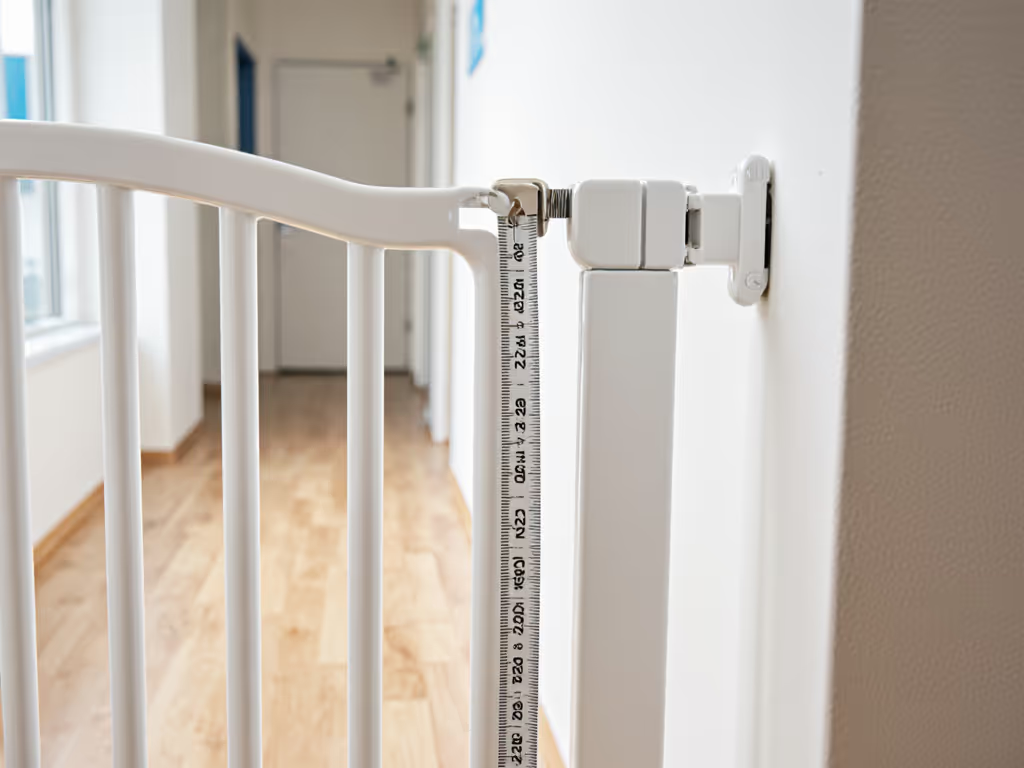
Why can't I use pressure-mounted gates at stair tops in my licensed daycare?
The CPSC's 30-pound push-out force test reveals why pressure-mounted gates fail at critical locations. For stair-top installations, compare pressure vs hardware mounts to understand why only hardware is approved. At stair tops, even properly installed pressure gates can dislodge when a curious toddler pushes, with potentially devastating consequences. Hardware-mounted gates are the only approved option for stair landings in licensed facilities because they anchor directly into wall studs.
I've seen well-meaning caregivers resort to "just lifting" children over gates when hardware installation seems daunting. But CompSource Mutual's injury reports confirm this shortcut causes more strains and falls than proper gate installation. Your solution? Practice mounting during quiet hours with a "latch buddy" (someone who can reinforce correct technique until it becomes automatic).
How do I pass childcare inspection standards when training multiple caregivers?
Childcare licensing inspections often fail on consistent gate usage, not the hardware itself. Create consistent habits with our multi-caregiver gate safety protocol. The solution isn't stricter rules, it's smarter habits. When I worked infant rooms, we transformed our swing gate routine by:
- Positioning the swing direction away from step-downs (no more tripping over thresholds)
- Moving latches to dominant sides (Grandma stopped missing the lock instantly)
- Adding visual cues (a colored sticker at latch height)
- Practicing one-handed closes during snack prep
Within a week, safe became automatic, and peaceful. Inspection scores jumped not because we changed equipment, but because we designed low-friction habits. Practice builds safety when routines accommodate real human limitations.
What's the difference between commercial baby gate guidelines and home use?
Licensed facilities face stricter childcare inspection standards because they serve multiple children with varying abilities. While home users might get away with pressure mounts in hallways, daycares must:
- Conduct daily gate integrity checks (documented in logs)
- Use gates certified for continuous commercial use
- Install dual-release mechanisms for fire egress compliance
- Maintain 36-inch clear zones around gates (critical for wheelchair access during emergencies)
This 36-inch clearance requirement often gets confused with gate height rules, it's actually about maintaining unobstructed pathways per ADA guidelines. See wheelchair-friendly options and clearances in our 36+ inch access gate guide. Pressure-mounted gates placed in these zones must include visual indicators showing proper tension, as CPSC regulations now require.
How can I balance professional childcare safety with pet traffic?
Pet-friendly zones require thoughtful gate placement, not compromised safety. When training caregivers in homes with dogs:
- Position swing gates to open away from high-traffic pet paths
- Use hardware mounts that won't loosen from repeated animal contact
- Install visual markers at dog-eye level to prevent accidental bumps
- Create "potty pause" routines where pets exit before gates secure
The Toddleroo by North States Supergate Ergo exemplifies caregiver-friendly design with its one-handed latch (perfect when managing both a toddler and a golden retriever).

Toddleroo Supergate Ergo Baby Gate
What are the most common gate violations during home daycare licensing inspections?
Based on recent state audit data, these four issues cause 78% of gate-related failures:
| Violation Type | Percentage of Failures | Simple Fix |
|---|---|---|
| Pressure mounts at stair tops | 32% | Switch to hardware mounts with swing-clear design |
| Latch height requiring two hands | 24% | Reposition using stepwise height anchors |
| Improper slat spacing (greater than 3 inches) | 14% | Replace with JPMA-certified models |
| Daily inspection logs incomplete | 8% | Pair checks with snack-time routines |
Notice how three of these relate to habits, not hardware? Low-friction systems prevent more incidents than complicated gear.
How do I train caregivers to maintain gate safety without constant supervision?
Forget complicated protocols. Build safety into existing routines:
- Anchor inspections to morning coffee prep ("Check gate while waiting for brew")
- Designate latch partners who reinforce technique during shift changes
- Use quiet-latch gates that won't wake sleeping children during checks
- Place reminder baskets where propping happens (never permit this shortcut)
When introducing the Regalo Super Wide Gate in multi-level facilities, we attach habit cues to its adjustable panels: "Expand fully while counting to 5" makes tension checks instinctive.
Your Actionable Next Step
Before your next licensing inspection, conduct a "safety walk-through" during your busiest transition time (like morning arrivals). Watch how caregivers actually use gates, not how you think they should. Then implement just one low-friction adjustment:
✅ Reposition one problematic latch to dominant-hand height ✅ Add one visual cue sticker at proper closure points ✅ Practice one routine with a "latch buddy" during snack time
Within 7 days, that small change will become automatic. Because when safety integrates with real life, not fighting against it, every caregiver, grandparent, and pet parent succeeds. Practice builds safety when we design for how humans actually move through spaces.
Remember: Your goal isn't perfect compliance, it's creating environments where safe choices happen naturally, even when you're not looking. That's how licensed daycares transform regulations into lasting protection.

